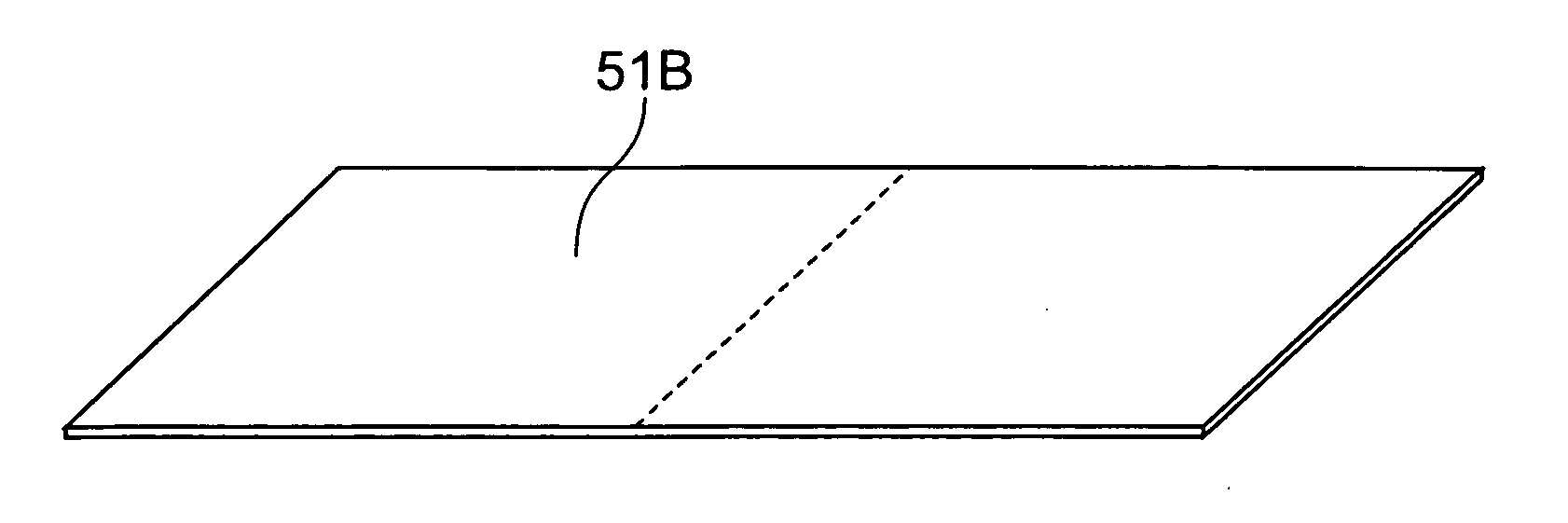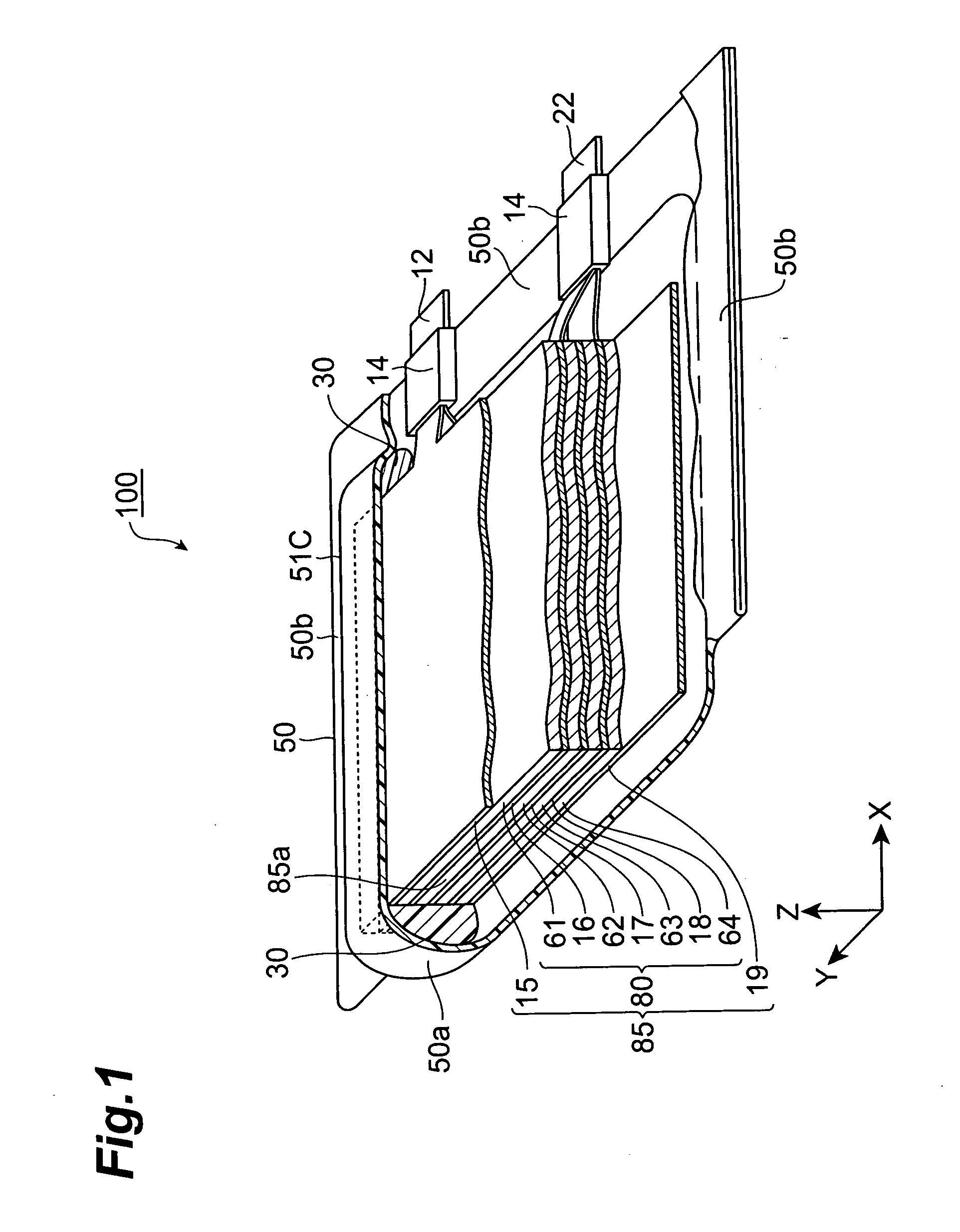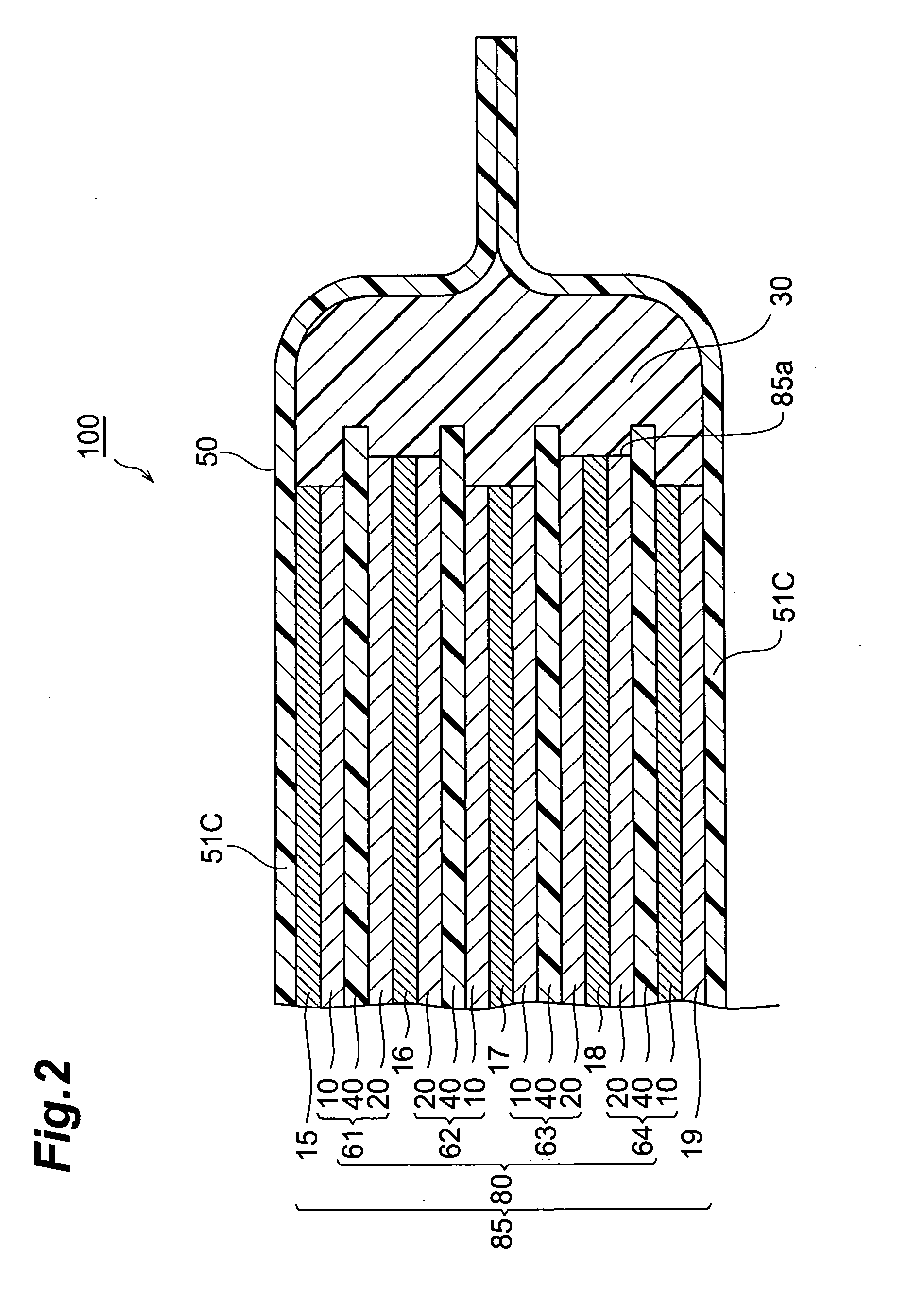Method of making electrochemical device
a technology of electrochemical devices and electrochemical components, which is applied in the direction of cell components, final product manufacturing, sustainable manufacturing/processing, etc., can solve the problems of increasing the thickness of the bonded part, reducing the energy capacity of the whole device, and generating physical obstacles, etc., to achieve high ionic conductivity, high viscosity, and high electroconductivity
- Summary
- Abstract
- Description
- Claims
- Application Information
AI Technical Summary
Benefits of technology
Problems solved by technology
Method used
Image
Examples
example 1
[0086] (1) Making of Electrode Layer
[0087] Cathodes (polarizable electrodes) were made in the following manner. First, LiCoO2 as a cathode active material, carbon black and graphite as conductive auxiliary agents, and Kynar Flex 741 (PVDF homopolymer particle manufactured by Elf Atochem, having a weight-average molecular weight Mw of 5.5×105 and an average particle size of 0.2 μm, soluble in N-methyl-2-pyrrolidone (NMP)) were prepared, and were compounded such that the weight ratio of cathode active material / conductive auxiliary agent (carbon black) / conductive auxiliary agent (graphite) / binder=90:3:3:4. Thus compounded mixture was put into NMP acting as a solvent, and they were kneaded, so as to prepare a cathode coating liquid (slurry). NMP was added with its amount adjusted such that the weight ratio of NMP / binder=94:6.
[0088] Next, aluminum foils (two with a thickness of 60 μm and four with a thickness of 40 μm) were prepared. For each of the aluminum foils having a thickness of...
example 2
[0098] The lithium ion secondary battery in accordance with Example 2 was made as in Example 1 except that the compound (having a viscosity of 35×10−3 Pa·s at 25° C.) represented by general formula (9) was used as the ionic liquid.
example 3
[0099] The lithium ion secondary battery in accordance with Example 3 was made as in Example 1 except that the compound (having a viscosity of 90×10−3 Pa·s at 25° C.) represented by general formula (10) was used as the ionic liquid.
PUM
| Property | Measurement | Unit |
|---|---|---|
| viscosity | aaaaa | aaaaa |
| temperature | aaaaa | aaaaa |
| size | aaaaa | aaaaa |
Abstract
Description
Claims
Application Information
 Login to View More
Login to View More - R&D
- Intellectual Property
- Life Sciences
- Materials
- Tech Scout
- Unparalleled Data Quality
- Higher Quality Content
- 60% Fewer Hallucinations
Browse by: Latest US Patents, China's latest patents, Technical Efficacy Thesaurus, Application Domain, Technology Topic, Popular Technical Reports.
© 2025 PatSnap. All rights reserved.Legal|Privacy policy|Modern Slavery Act Transparency Statement|Sitemap|About US| Contact US: help@patsnap.com



